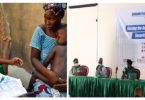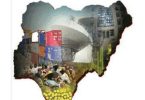The ultimate cure to a society’s problem of bridging the digital divide is sustainable digital literacy. Just how significant are the concepts of ‘digital divide’ and ‘digital literacy’? What do they actually mean?
Join us to explore how technology is helping the educational sector in Nigeria in bridging the digital divide. And how such efforts will help all stakeholders to carve out a better Nigeria in the nearest future.
Digital Divide and Digital Literacy: Definitions
Web authors Charlie Muller and Joao Paulo Aguiar define digital divide as:
“the gap between those with internet access and those without it”.
They go further to state that there are a number of factors that determine how wide the digital divide in society can be. Some of those factors include affordability, availability, relevance, quality of services, interconnectivity, access to equipment and security. (Aguiar and Muller, 2022: “What is Digital Divide”, The Internet Society).
In simple terms, a digital divide exists where people who have little or no regular access to the internet, are found in the same geographical area as those with better access. It may occur because they have low earning power, or restricted access to digital devices (including computers) for whatever reasons. Additionally, there is a digital divide between the rich and the poor, and between men and women. It also exists between urban and rural areas, and between the educated and the non-educated. It even exists between the developing and developed nations of the world.
On the other hand,the UNESCO website gives a clear definition of digital literacy as follows:
“Digital literacy involves the confident and critical use of a full range of digital technologies for information, communication and basic problem-solving in all aspects of life. It is underpinned by basic skills in ICT: the use of computers to retrieve, assess, store, produce, present and exchange information, and to communicate and participate in collaborative networks via the Internet.”
Thus, any individual or group that can access and use the internet (via digital tools and technologies) for problem-solving and communication is digitally literate. That suggests that digitally literate persons must have both the digital tools and the skills to use the internet.
Latest Statistics on Digital Divide
There are a number of approaches used to measure a society’s digital divide. Digital divide can be measured based on the land area covered by Internet Service Providers (ISPs). It may also be measured by the number of digital devices available that can access the internet at any point in time.
The datareportal website churned out the following facts and figures about internet usage in Nigeria as at January 2022:
- Out of a total population of roughly 214.1 million, there were about 109.2 million internet users in Nigeria
- The internet penetration rate at the start of the year was up to 51.0 per cent.
- Subsequently, about 104.9 million Nigerians did not use or access the internet as at January 2022.
- Also as at 2021, only 33% of the African population (871 million people) were connected to, and using the internet. In fact, sub-Saharan Africa has the highest cost of monthly internet data worldwide. While so many Africans cannot even afford to buy or own digital devices.
The 2021 Ibrahim Forum Report on digital divide in Africa further stated that:
- 82% of pupils in Sub-Saharan Africa lack access to the internet, and 89% lack access to household computers.
- At least 20 million people live in areas not covered by a mobile network.
- Moreover, there are wide gender disparities in ownership of, and access to digital devices. This situation has badly affected girls
- Lastly, only 50% of countries in Sub-Saharan Africa have computer skills as part of their school curriculum, compared with 85% globally.
These challenges have slowed down the use of internet and digital devices in key areas such as education, research and development.
How Technology is Shaping and Advancing Education in Nigeria
For one, we now know that we can access education from anywhere across borders and without borders. Thanks to internet and telecommunications technologies. Online registration for courses, school enrolment in general, as well as attending live and recorded classes are now fairly commonplace in Nigeria as elsewhere. There are innumerable downloadable learning videos and documents for use by both students and teachers. And to crown it all is the electronic teaching facility. Projectors and smartboards can make computer presentations possible in modern classrooms.
Also, the opportunity to join educative forums on the internet and social media platforms is a huge bonus to our educational system. Students can share ideas and co-work on projects and assignments with ease, and from anywhere. All they need is an internet-enabled device (such as smartphones, tablets and/or computers), the right software, and an environment free of distraction.
Unfortunately, these are privileges enjoyed by the upper middle class and the rich who can afford to put their children in expensive schools. They form a minute percentage of the Nigerian population. What happens to the teeming masses who are struggling to eke out a living? And who cannot attend choice schools nor access digital technologies easily? There must be determined intervention strategies by the government and individuals alike to help these underserved and underprivileged people.
Bridging the Digital Divide in Nigeria’s Education Sector
The digital divide in every human society today contributes negatively to other existing divides. That includes access to healthcare, education, and economic earning power. And just as there are several contributing factors to the society’s digital divide, there is also no single solution to it. What initiatives could bring about the desired change in bridging the digital divide in Nigeria? Particularly in the education sector. Here below are some ongoing projects and further suggestions. These ideas could improve the drive to bridge the digital divide in education in Nigeria.
Supportive Government Policies
Implementing government policies that can promote increased digital literacy amongst Nigeians is very crucial. For instance, the Nigerian government initiated the National Digital Economy Policy and Strategy not too long ago, to reduce digital illiteracy in the country. The policy aims to create partnerships with ICT training institutions to offer world-class training on digital technologies to interested citizens. The Nigerian government has one such partnership with IBM.
Forming Community Networks
Community networks that help to bring internet access to low-income or low-density areas is very beneficial. Members of the community with the power to provide internet access and digital devices to their local community are a great treasure. They can make internet access available and affordable for their neighbors.
In the process, such enablers also empower the locals to access other critical needs through the internet and digital technology. They can better access telemedicine, online learning (and education in general), agricultural extension services and e-commerce services through such networks. Such initiatives were carried out in specific places around the world with success (such as in Zimbabwe and Hawaii). It can also be applied to Nigeria.
Computers for All Nigerians Initiative (CANI)
This plan was put in place in 2006 to help Nigerian civil servants buy computers and pay by hire purchase. The interest rate on such a loan is also quite small. The initiative is supervised by NITDA (National Information Technology Development Agency) in partnership with Zinox, Omatek and Microsoft. We can only speculate on how far that initiative has succeeded, but it is said to be ongoing.
Construction of Computer Centers in Higher Institutions by the PDTF
An equally welcome plan by the Petroleum Technology Development Fund (PTDF) to build and equip computer centers in tertiary institutions across Nigeria was proposed in 2007. Though it does not cover providing internet access, it would go a long way to encourage more contributors to join the project. And it would improve digital literacy applications in such schools and their environment.
That kind of facility can be used to train youths and interested people in digital technologies. It could be a social responsibility project run by large corporate organizations (such as banks and ICT organizations) or by non-governmental organizations.
The Digital Bridge Institute
The Digital Bridge Institute was built and commissioned in 2007 by the Nigerian Communications Commission (NCC). This was to provide world-class training and support for Nigerians in advanced telecommunication skills. It has since commenced the training, equipping both Nigerians and foreigners alike to take up skilled roles in the telecommunication industry.
Mobile Internet Unit (MIU) project
As far back as 2003, the NITDA created MIUs (Mobile Internet Units). These MIUs were locally-made 18-seater buses installed with ICT training and cyber center equipment. The MIUs had at least 10 internet-enabled workstations, photocopier, printer, VSAT equipment, satellite dish, a generator and other multimedia installations. It was meant to take internet facilities to places cut off from internet access, especially rural areas.
The plan was to make sure every state (and possibly every local government in Nigeria) has its own MIU for better internet access. Reports have it that it is an ongoing project, although there were hindrances to its implementation due to lack of financial commitment by the government. By all means, such an initiative should not be abandoned. This would be a major breakthrough that would contribute to bringing Nigerian rural dwellers out of backwardness in technology and internet access.
National Virtual Library Project
In 2001, the National Virtual Library project was established with a view of setting up wide area networked libraries in schools across the nation. These libraries would have computers and telecommunication equipment installed and maintained.
Thus students and their teachers would have ready access to the endless pool of information on the internet. This would facilitate improved quality of teaching and learning in Nigerian schools at all levels. Such a project is highly lauded and should never be abandoned.








